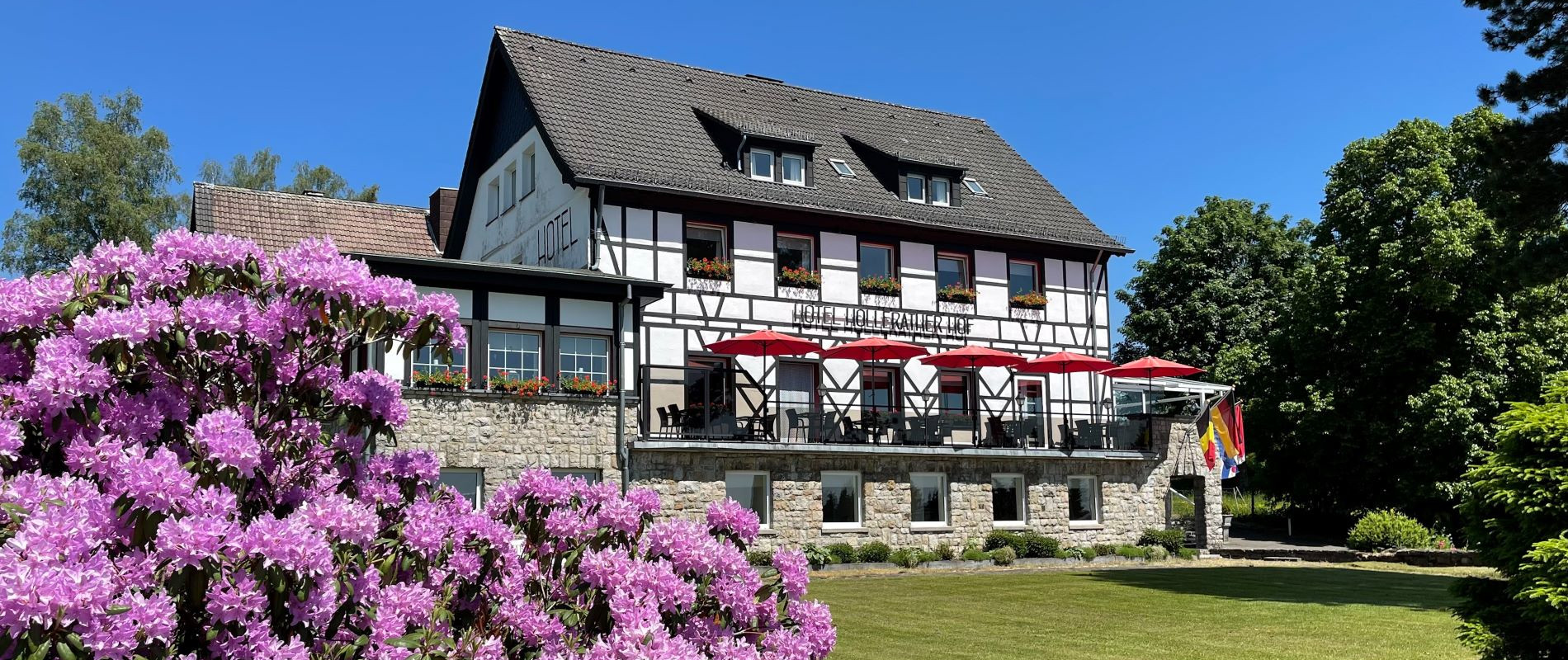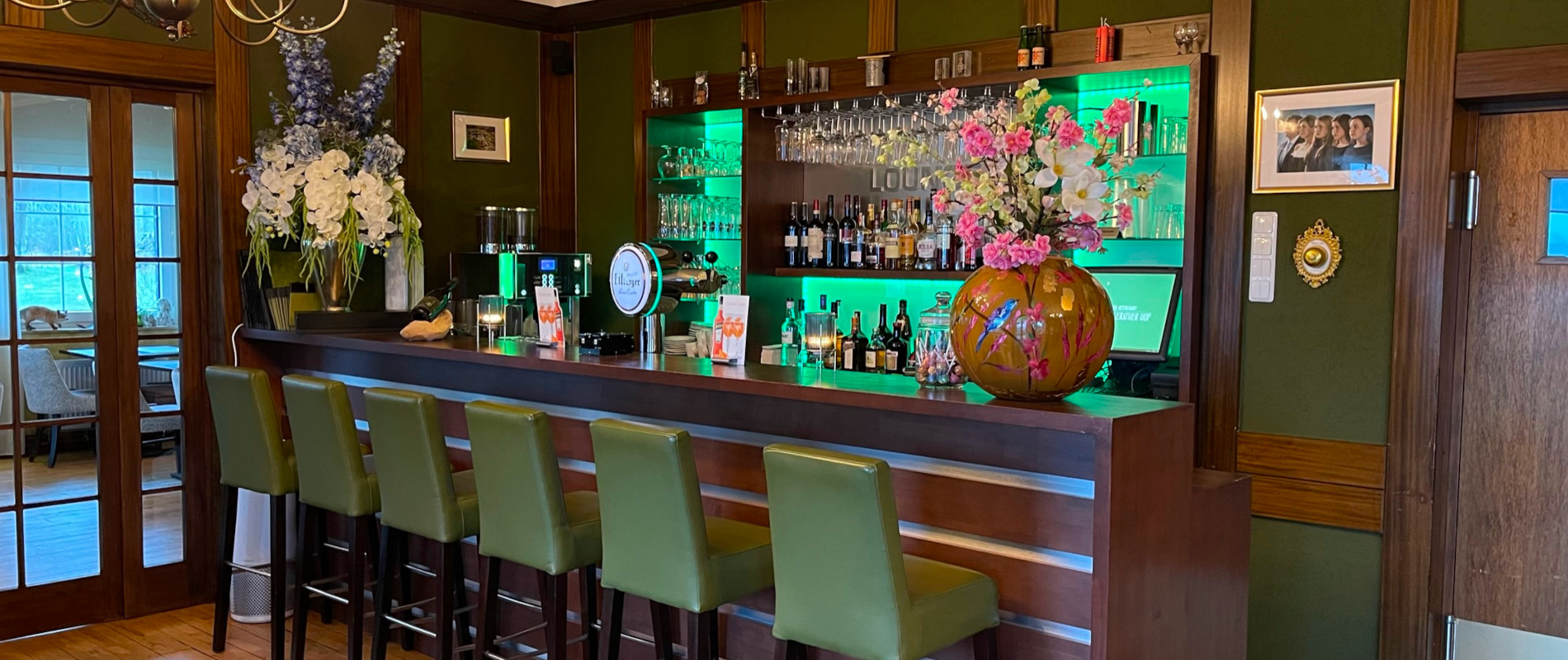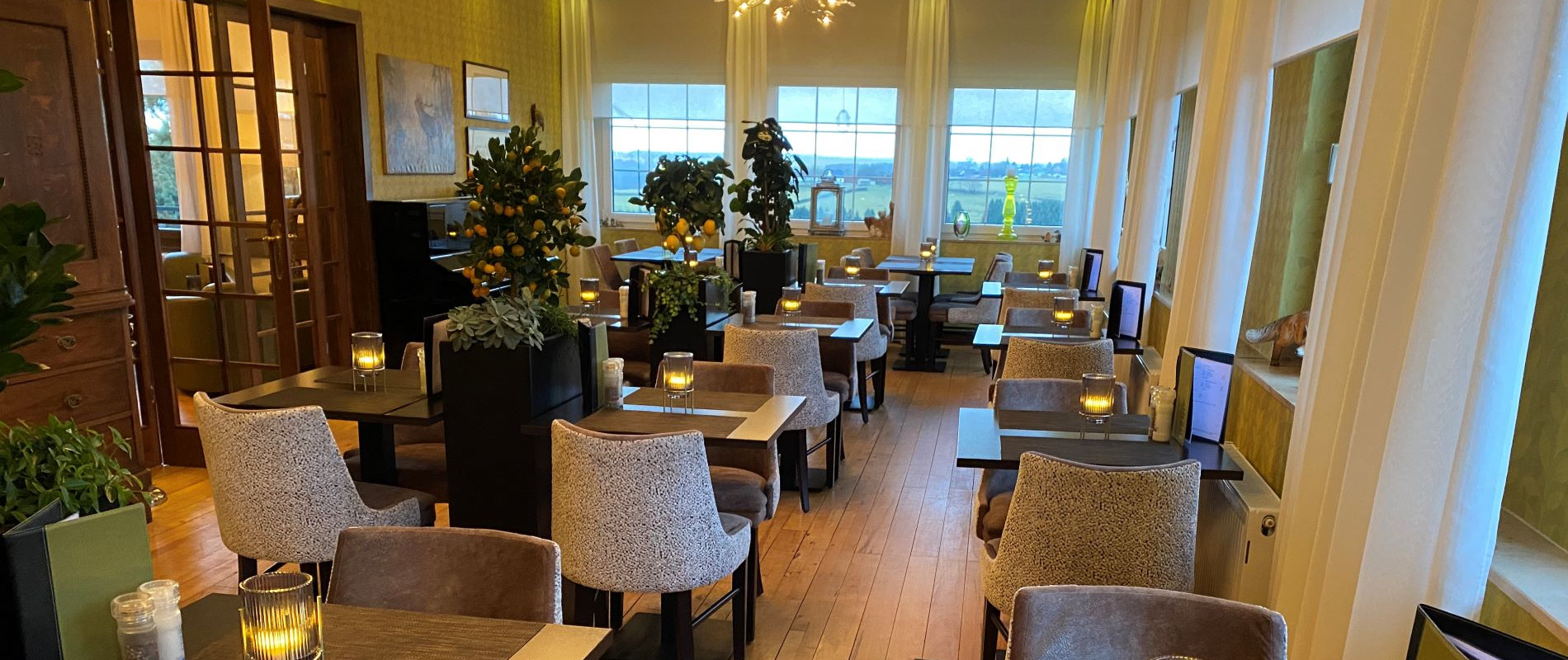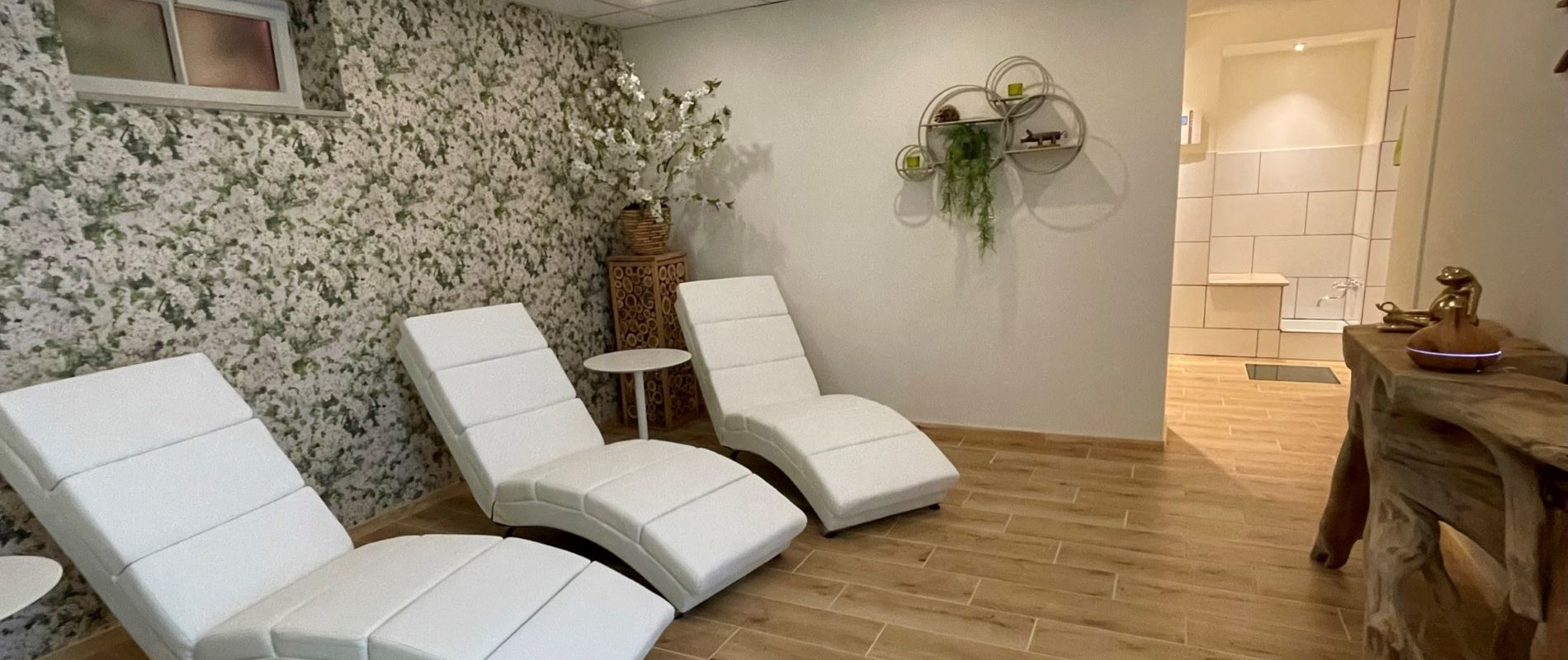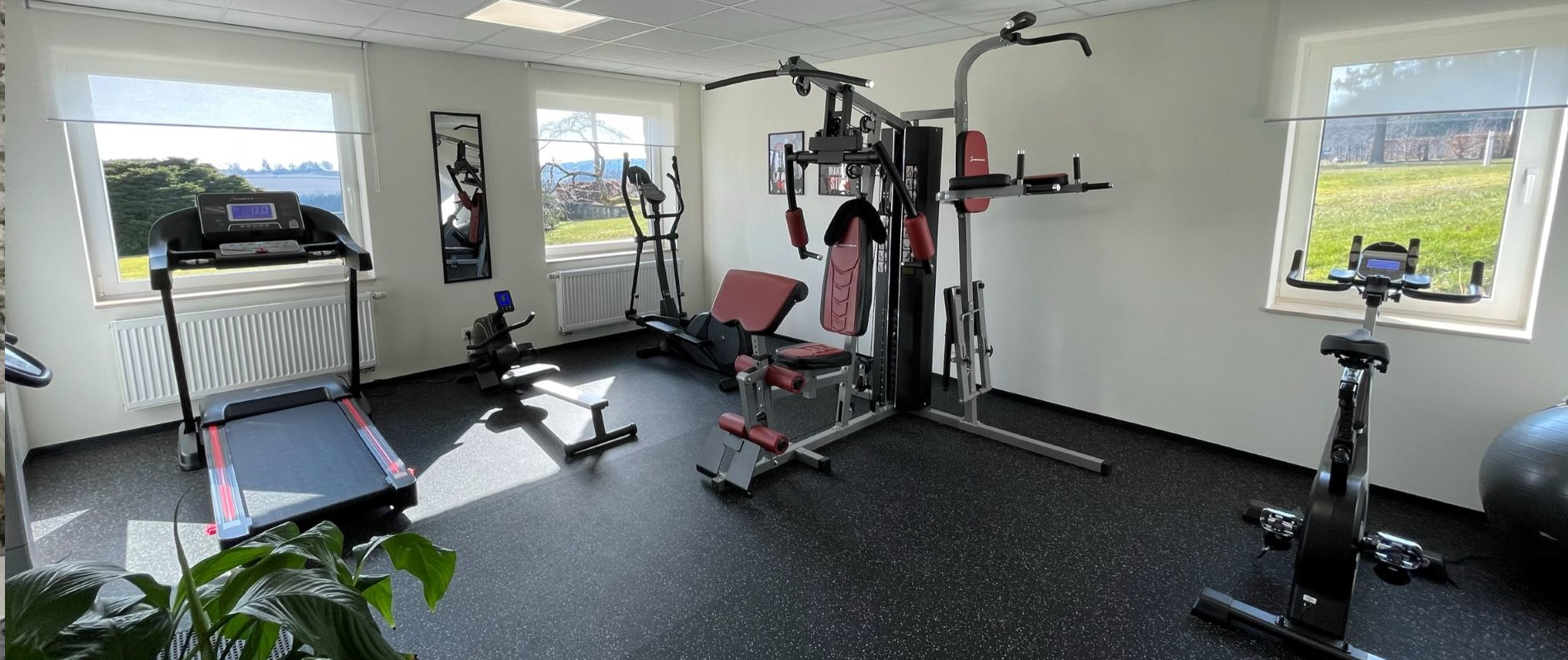 Hotel Restaurant Hollerather Hof was built in 1933/1934 by Heinrich Kampschulte. The hotel had to serve as an example for all hotels in the Eifel region and was equipped with the most modern gadgets, such as cold and warm running water in the rooms and central heating. The hotel was known as "Sporthotel Hollerather Hof".
Hotel Restaurant Hollerather Hof was built in 1933/1934 by Heinrich Kampschulte. The hotel had to serve as an example for all hotels in the Eifel region and was equipped with the most modern gadgets, such as cold and warm running water in the rooms and central heating. The hotel was known as "Sporthotel Hollerather Hof".
It was especially busy here in winter. At that time there was two to three meters of snow every year and it was a well-known winter sports area. Especially from the region of Cologne, Aachen and Bonn, many tourists came by train to Hellenthal, and then by bus to Hollerath for skiing, cross-country skiing and tobogganing.
The hotel was also freqeuntly visited by high-ranking officers who supervised the fortification of the Western Wall (also known as Hockerlinie or Siegfriedlinie) which is located nearby. Behind the hotel was a prison camp for Russian prisoners of war, who had to work on strengthening this line of defense.
Simultaneously with the completion of the Hollerather Hof, Heinrich Kampschulte also built the "Adolf Hitler Schans". This ski jump was the largest and most modern in the region and served as the primary practice jump for the "Westdeutschen Skiverband". The hotel also accommodated the members of this ski association.
 Norwegian ski jumper Birger Ruud, among others, trained here for the 1936 Winter Olympics. Birger Ruud dominated ski jumping in the 1930s, winning five world championships, including both Olympic titles at the Winter Olympics (in 1932 and 1936).
Norwegian ski jumper Birger Ruud, among others, trained here for the 1936 Winter Olympics. Birger Ruud dominated ski jumping in the 1930s, winning five world championships, including both Olympic titles at the Winter Olympics (in 1932 and 1936).
Even at the beginning of the war (1939) there were still many house guests, whose number naturally decreased as the war progressed.
During the Ardennes offensive, which started in Hollerath and was the last offensive of the Nazis, the ski jump as well as most of the houses and buildings in Hollerath were destroyed. The Ardennes Offensive was a plan by Adolf Hitler to cut off and destroy the northernmost Allied forces on the Western Front from their supply lines. The battle lasted from December 16, 1944 to January 25, 1945.
The hotel was hit so hard by artillery and machine-gun shells that by the end of the war it was only a ruin – including the hotel extension, which was not yet completed. After multiple looting, there was no more inventory.
The reason that the Hollerather Hof wasn't completely destroyed is due to the large red cross on the roof, because it was used as a field hospital. The hotel was located directly behind the line and was therefore very suitable for this.
 Because the Hollerather Hof was one of the few buildings that was still intact, the basement was used as a church after the war. The Sunday school was also housed in the hotel. The hotel also offered shelter to refugees and the homeless and the soup kitchen was located here.
Because the Hollerather Hof was one of the few buildings that was still intact, the basement was used as a church after the war. The Sunday school was also housed in the hotel. The hotel also offered shelter to refugees and the homeless and the soup kitchen was located here.
In the years that followed, the hotel became increasingly dilapidated. Wood was used for heating and building materials were taken out for use elsewhere.
Seven years after the war, Lambert Fassbender inquired about the ownership of the ruins after he had the idea of rebuilding and reopening the hotel. He learned that the wife of the owner, who had passed away, Ms. Aenne Kampschulte, lived in Herzogenrath near Aachen. He visited her and soon agreed with her in 1952 to buy the hotel property in Hollerath.
 The hotel was in very bad condition and was completely renovated by him. On December 5, 1953 the hotel was reopened.
The hotel was in very bad condition and was completely renovated by him. On December 5, 1953 the hotel was reopened.
However, the hotel business did not fare as well as expected over the next seven years.
On snowy Sundays there were still special ski trains from Cologne to Hellenthal, from which hundreds of visitors came to Hollerath, but the snowy weekends were simply not enough to run the hotel economically in winter. In addition, cool summers with a lot of rain in the 1950s brought fewer guests than expected. The balance sheets got worse every year.
Since Lambert Fassbender in Neuss was very busy with the business he had been running for decades, he temporarily neglected the Hollerather Hotel. He relied on a cousin whom he employed as his representative at the hotel, but whose alcohol addiction was discovered too late.
The hotel was closed by the supervisory authorities due to a food scandal. In 1961, Lambert Fassbender sold the Hollerather Hof to Mrs. Hilde Klode from Aachen at great financial loss.
Ms. Klode renovated the restaurant and rooms, rebuilt some things and tried to get by with as few staff as possible.
In the following years tourism started again and with it the hotel flourished again. The Hotel Hollerather Hof was well-known throughout the Eifel region and far beyond, and was also highly regarded in terms of cuisine. At the weekend she was so busy that the streets around the hotel were full of parked cars. Many customers came here mainly for their delicious soup.
At the end of the 1970s, Hildegard fell ill and her son Erich came to help her in the business. He studied to become a sports teacher, but fate decreed otherwise.
In 1980 he took over the hotel from her. He adapted the hotel to the requirements of the time and built, among other things, a swimming pool in the basement. The hotel was also completely insulated on the outside. This insulation layer has ensured that the hotel has the current fachwerk appearance.
 In the years that followed, tourism in the Eifel declined sharply. Bus and air travel became increasingly affordable and tourists flocked to Spain, Greece and Turkey. There was not much to do in the Eifel and many hotels had to close their doors. Despite the declining tourism, the Hollerather Hof has managed to survive.
In the years that followed, tourism in the Eifel declined sharply. Bus and air travel became increasingly affordable and tourists flocked to Spain, Greece and Turkey. There was not much to do in the Eifel and many hotels had to close their doors. Despite the declining tourism, the Hollerather Hof has managed to survive.
However, for several years now, tourists have been slowly returning to the Eifel. The proclamation of part of the Eifel as a National Park in 2004 has contributed greatly to this. The trend of spending holidays sustainably and not wanting to fly, or at least wanting to fly as little as possible, is also increasingly contributing to this.
On February 15, 2012, Hotel Hollerather Hof was taken over by Auke Beetstra and Ed Bos. After a thorough renovation, the hotel is ready for a new chapter in its history.



